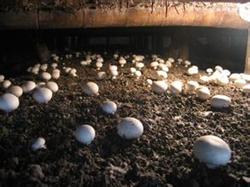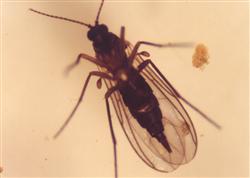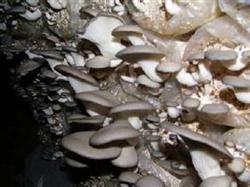Improved Technique of Mushroom Cover

Soil mulching is an important link in the cultivation process of Pleurotus ostreatus, and the properties of soil covering materials directly affect the time and yield of mushroom production. In particular, the water-holding capacity and water-holding capacity of the covered soil have a great influence on the yield. In recent years, the selection and improvement of soil covering materials have been carried out in various places. From the simple use of vegetable soil, river soil to the artificial preparation of composite soil (such as fine mud bran soil, fermented soil), northeast peat soil. However, the soil quality in many mountainous areas of our country is sandy, the water holding capacity is poor and the water holding capacity is low, while the source of clayey soil (such as vegetable field soil, river soil) is very few, which greatly restricts the development of mushroom planting industry in this kind of area. The practice shows that crushing rice and wheat straw into powder and adding it in a certain proportion can greatly improve the water retention of the covered soil, and the mycelium eats the soil quickly and fully, and the yield is high, and the processing can be completed by using only small machinery, which is worth popularizing. Now the technology is introduced as follows: first, the production technology of grass powder 1, cut grass and crush grass. Choose rice straw and wheat straw with golden color and no mildew and cut them into 2-4 cm long with a straw cutter or guillotine. The cut grass section is crushed with a feed grinder (sieve hole diameter 1.5 mm or 2.0 mm). Generally, a 4 kilowatt motor can crush the grass 30 kg / h, 111 square meters covered with about 4 cm thick soil, and 100 kg hay powder is the best. 2. Pre-wetting and adjustment of grass powder. Pre-wet grass powder with lime water with a ph value of about 12, and add 10 kg of lime water for every 10 kg of grass powder. Pay attention to avoid grass powder water content is too high, otherwise the soil and grass powder will be difficult to mix, and into a "small grass mass" shape. Second, cover soil and cover soil production technology 1, the proportion of covering soil and disinfection. The day before the pre-wet grass powder, to soak the rice chaff, generally soak it in lime water with a ph of 12-13 for 24 hours, mix it with the pre-wet grass powder and spray 1% formaldehyde while shaking, so that the water content of the overlying soil can reach the degree of "hand kneading into a ball, shaking the hand can disperse". After pushing it into a cone, cover it with a thin film and keep it tight for 48-72 hours. 2. Upper soil. After boredom, lift the film, spread out the soil and disperse the smell of medicine. Generally, 0.2% pyrethroid is sprayed after 36 hours, so that the water content of the covered soil can reach the degree of "hand kneading into a ball, throwing hands can disperse", and then on the soil, generally 15-18 cm thick on the soil about 4 cm, the thickness is uniform. 3. The management after covering the soil. After covering the soil, it is necessary to maintain the humidity of the mushroom room and often spray water to the ground. The surface is wet but does not accumulate water, so as to avoid losing too much water. On the 3rd day after covering the soil, when the hyphae just begins to eat the soil and the soil surface begins to dry again, spray 0.1% carbendazim appropriately to prevent the growth of miscellaneous bacteria and adjust the water content of the covered soil. In the next few days, we should also always pay attention to the water content of the covered soil, because the mycelium eats the soil 1 cm and consumes a lot of water, so it is necessary to replenish the water in time, so that the water content of the covered soil can always be "pinched into a ball by hand, and can be dispersed." generally, after 7-8 days of covering, the mycelium eats the soil to about 4x5 of the thickness of the soil layer, and at this time it can be ventilated, sprayed with mushroom water, and the management is the same as routine.
- Prev

A new method of dung-free cultivation of mushroom
Fungus mosquitoes, also known as "gall midges", reproduce very fast, often carrying bacteria to make mushrooms sick, and their larvae (maggots) can be divided into white and orange. Mosquitoes often lay eggs on the compost that produces mushrooms, and the eggs begin to hatch before the hyphae grow up. The larvae grow up before the first batch of mushrooms come out, and are harmful to the stalks and lids of mushrooms. Because.
- Next

Cultivation Technique of Mushroom at High Temperature
Mushroom is a bisporus mushroom, its delicious, nutritious, it contains high protein low fat, a variety of vitamins, cellulose, sugar and calcium, phosphorus, iron, etc., contains 18 kinds of amino acids in the protein, 8 of which are essential amino acids in the human body. Therefore, mushrooms are good for people's daily life...
Related
- Fuxing push coffee new agricultural production and marketing class: lack of small-scale processing plants
- Jujube rice field leisure farm deep ploughing Yilan for five years to create a space for organic food and play
- Nongyu Farm-A trial of organic papaya for brave women with advanced technology
- Four points for attention in the prevention and control of diseases and insect pests of edible fungi
- How to add nutrient solution to Edible Fungi
- Is there any good way to control edible fungus mites?
- Open Inoculation Technology of Edible Fungi
- Is there any clever way to use fertilizer for edible fungus in winter?
- What agents are used to kill the pathogens of edible fungi in the mushroom shed?
- Rapid drying of Edible Fungi

